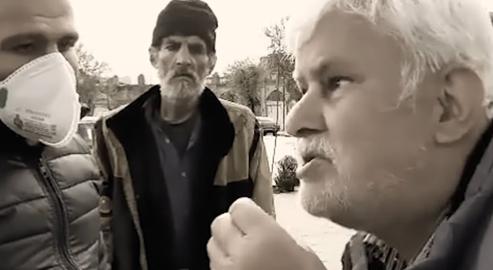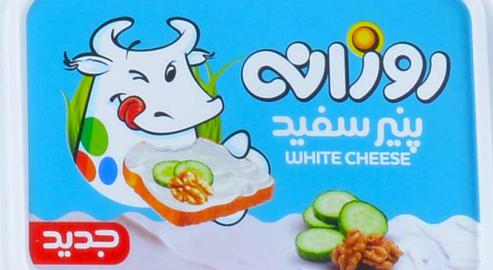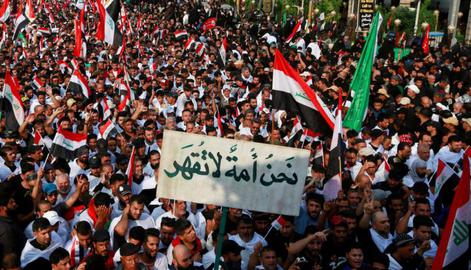IranWire uses the market rate to calculate the exchange rate of the Iranian toman, referring to the TGIU site, which is used by most businesses and exchange bureaus in Iran.
In recent days a shocking video has been doing the rounds online in Iran. It features an old peddler, apparently unable to work due to the coronavirus, who claims he has been forced to take to the streets to obtain a crust of halal bread to eat. For two days now, he says, his children have asked him to buy cheese for them, and he has not been able to manage it.
People have speculated that the old man's claims are probably true. But no matter the veracity of the footage, the miserable state of poverty depicted in this video is extremely realistic – and no less shocking for it.
According to official estimates, more than half of Iran's population is currently at risk of absolute poverty, hunger and malnutrition. This means in practical terms that their income is not enough to provide adequate food and make ends meet.
In December 2018 a report compiled by the Iranian Parliament Research Center predicted that in 2019 the first seven deciles of income, encompassing a population of about 57 million, would be below the poverty line and therefore at risk of malnutrition or even starvation if the government does not provide food support.
At this point it is safe to surmise that the principal challenge faced by many Iranians in their day-to-day lives is securing food: not even good-quality nutrition but the cheapest and most rudimentary meals, such as bread and cheese, as the viral video has highlighted.
What is the government's pension for victims of coronavirus?
The video of the old salesman prompted a rapid response from First Vice President Eshagh Jahangiri, who pointed out that the government has allocated between 200,000 and 600,000 tomans – or between US$14 to $40, based on current exchange rates – a month to support three million people living in food poverty. Jahangiri was referring to a decision made by the cabinet during its last meeting in March 2020, which stipulated that an amount would be allocated to the worst-hit families – with the actual payout depending on the size of the individual household – over the next four months.
The cost of this amount of aid will be a significant blow to the accounts of Hassan Rouhani's already bankrupt government, and no one knows exactly where it will come from. But how far will this measure actually impact on the lives of the poor? What is the value of 200,000 to 600,000 tomans for a family of four to five people?
How useful is this money for the old peddler whose trivial income has been cut off due to the outbreak of coronavirus? Based on this stipend alone, how many meals can a family have? How much cheese and how many loaves of bread can this money buy?
How much does a meal of bread and cheese cost?
A search of the websites of Tehran's major online supermarkets reveals that the average price of a 550-gram block of white cheese is about 13,200 tomans, or 90 cents. With this in mind, someone in receipt of the new government stipend could buy 15 to 45 blocks of cheese per month.
But when the cost of bread is factored in, the picture changes. It is recommended that everyone eat 310 grams of carbohydrates in the form of bread or other starchy foods a day.
The approved weight in October 2018 of a loaf of Sangak bread was 450 grams. Sangak bread is currently sold in Tehran bakeries for up to 2,500 tomans or 17 cents per loaf. If we assume the ordinary price of a portion of bread is closer to 1500 tomans, or 10 cents, and add two portions for a full meal for a family of four to five people, the price of each meal exceeds 15,000 tomans – roughly a dollar.
In a previous report published in January 2020, IranWire estimated the cost of preparing an omelet in Iran to be 16,000 tomans or $1.10. This new analysis shows that even without this more nutritious add-on, the cost of providing a basic meal of bread and cheese – insufficient by anyone’s standards – is at least 16,000 tomans.
Assuming that each member of a poor family requires two servings of bread and cheese every day for basic sustenance, the cost of the family’s daily meals exceed 32,000 tomans or $2.20 per day, and about one million tomans or $69 per month.
This figure is 400,000 tomans – or $27.00 – more than the government's monthly support package. In other words, if the head of the household has lost his job due to the coronavirus pandemic and has no other source of income other than this meager handout, he is still short of the 400,000 tomans needed to prepare minimal food, and it is unknown at this time how he will be able to provide for this shortage.
What about the non-food expenses of the poor?
Food is not the only day-to-day expense for which poor families must account. According to estimates by the Statistics Center of Iran, the proportion of the lowest-income decile of households’ expenditure that is taken up by food is 43 percent – that is to say, more than half of poor families’ income is spent on other necessities, most importantly keeping a roof over their heads.
This means that the amount of monetary backlog faced by people whose income source is cut off due to the coronavirus outbreak, economic recession or any other unexpected circumstance is likely to be at least 1,500,000 tomans, or $103, and in all likelihood more. But while the Iranian economy remains in dire straits, the government is not able to adequately compensate for a situation which – based on the cold, hard figures alone – is beyond the limit of human tolerance.
visit the accountability section
In this section of Iran Wire, you can contact the officials and launch your campaign for various problems


























comments